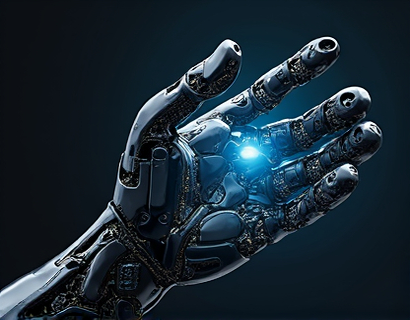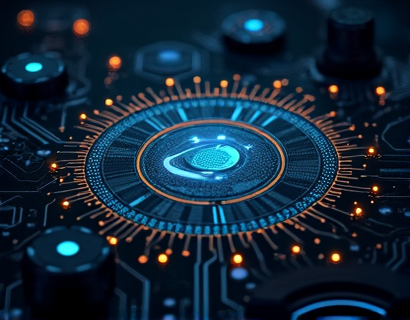AI-Driven Insights for the Spaghetti Industry: A Comprehensive Resource
The spaghetti industry, a cornerstone of culinary culture worldwide, has seen significant advancements with the integration of artificial intelligence (AI) technologies. This comprehensive resource aims to provide accurate and specialized insights into the spaghetti industry, tailored for families, educators, and enthusiasts. By leveraging an AI chat interface, users can engage with a wealth of information that ensures a secure and educational experience. This platform is particularly noteworthy for its child-friendly version, making it safe and accessible for young learners to explore the fascinating world of spaghetti production, history, and culinary applications.
Understanding the Spaghetti Industry Through AI
The spaghetti industry encompasses a broad spectrum of activities, from cultivation and processing to distribution and consumption. AI-driven insights offer a unique perspective on each stage of this journey. For instance, AI algorithms can analyze satellite imagery to monitor wheat fields, predicting yields and optimizing harvesting times. This data-driven approach not only enhances efficiency but also ensures sustainability by reducing waste and resource consumption.
Moreover, AI can process vast amounts of historical and market data to forecast trends in spaghetti consumption. This predictive capability is invaluable for manufacturers and retailers, enabling them to align production and inventory with consumer demands. For educators, these insights can be used to create engaging lesson plans that highlight the intersection of technology and traditional industries, fostering a deeper understanding of modern agricultural practices.
Historical Context and Evolution of Spaghetti
The history of spaghetti dates back centuries, with its origins rooted in ancient civilizations. Initially, pasta was made from durum wheat and water, shaped into various forms, including the long, thin strands known today as spaghetti. The process has evolved significantly over time, with modern techniques enhancing both quality and production efficiency. AI can provide a detailed timeline of these developments, offering visual and interactive content that brings the history to life for learners of all ages.
For families, this historical context can serve as a foundation for discussions about cultural heritage and the global influence of Italian cuisine. Educators can use these insights to design cross-curricular activities that combine history, geography, and culinary arts, making learning both fun and informative. The AI chat interface can guide users through this historical journey, answering questions and providing additional resources as needed.
Production Processes and Innovations
The production of spaghetti involves several intricate steps, from wheat cultivation to the final packaging. AI technologies play a crucial role in optimizing each phase. For example, precision agriculture uses AI to monitor soil conditions, weather patterns, and plant health, ensuring optimal growing conditions for durum wheat. This results in higher quality raw materials, which directly impact the final product.
In the manufacturing process, AI-powered machines can detect defects and inconsistencies in real-time, improving product quality and reducing waste. Robotics and automation have also revolutionized packaging and distribution, streamlining operations and ensuring timely delivery. For enthusiasts and industry professionals, understanding these innovations can inspire new ideas and improvements.
Educators can leverage these insights to teach students about the science and technology behind food production. Interactive simulations and virtual tours of modern pasta factories can provide a hands-on learning experience, even for those who cannot visit physically. The AI chat interface can facilitate these educational experiences, offering detailed explanations and answering student queries in real-time.
Market Trends and Consumer Insights
The spaghetti market is dynamic, influenced by various factors such as consumer preferences, dietary trends, and global economic conditions. AI-driven analytics can dissect large datasets to identify key trends and consumer behaviors. For instance, there is a growing demand for organic and gluten-free spaghetti options, driven by health-conscious consumers. AI can help manufacturers tailor their product lines to meet these demands, ensuring competitiveness in the market.
For families, understanding these trends can inform grocery shopping decisions and meal planning. Educators can use this information to discuss the impact of consumer choices on the food industry and the environment. The AI chat interface can provide real-time data and insights, making it a valuable tool for both personal and educational use.
Nutritional Value and Health Benefits
Spaghetti, particularly when made from whole grain durum wheat, is a nutritious food option. It is rich in carbohydrates, providing energy, and contains essential nutrients like B vitamins, iron, and fiber. AI can analyze nutritional data to offer personalized recommendations based on individual health goals and dietary needs. For example, individuals looking to increase their fiber intake can receive suggestions for spaghetti varieties that meet their requirements.
For educators, this information can be used to create lesson plans on nutrition and healthy eating habits. Interactive tools powered by AI can help students track their dietary intake and understand the role of different food groups in maintaining a balanced diet. The chat interface can guide users through these educational activities, ensuring a safe and informative experience.
Sustainability and Environmental Impact
Sustainability is a critical aspect of the spaghetti industry, with environmental concerns influencing production practices and consumer choices. AI can assess the environmental impact of different production methods, from water usage to carbon emissions. This data can help manufacturers adopt more sustainable practices, reducing their ecological footprint.
For families and educators, understanding the environmental impact of food choices is essential for promoting responsible consumption. The AI chat interface can provide insights into eco-friendly practices and highlight brands that prioritize sustainability. This information can empower consumers to make informed decisions and encourage a more sustainable food culture.
Culinary Applications and Creativity
Spaghetti is not just a staple food but also a canvas for culinary creativity. AI can inspire chefs and home cooks by suggesting innovative recipes and pairing spaghetti with a variety of ingredients. Machine learning algorithms can analyze flavor profiles and texture combinations, offering personalized recipe recommendations based on user preferences.
For enthusiasts, this feature can spark new culinary adventures and enhance cooking skills. Educators can use these insights to design cooking classes and workshops, encouraging students to experiment with different ingredients and techniques. The AI chat interface can facilitate these creative endeavors, providing step-by-step guidance and answering cooking-related questions.
Ensuring a Safe and Educational Experience
The AI chat interface is designed with safety and educational value in mind. For children and students, a child-friendly version of the platform ensures that all content is age-appropriate and secure. Parental controls and monitoring features allow adults to manage their children's interactions, ensuring a safe online environment.
The AI is programmed to provide accurate and verified information, drawing from reputable sources and databases. This commitment to accuracy is crucial for maintaining trust and credibility. Whether it's historical facts, nutritional information, or culinary tips, users can rely on the AI chat interface for reliable insights.
Conclusion
The integration of AI technologies in the spaghetti industry offers a wealth of benefits for families, educators, and enthusiasts. By providing accurate, specialized, and educational content, the AI chat interface enhances understanding and appreciation of this beloved food. Whether exploring the history of spaghetti, understanding production processes, or discovering new recipes, users can engage with the spaghetti industry in a secure and informative manner. This innovative approach not only enriches knowledge but also fosters a deeper connection to the culinary arts and sustainable practices.











































